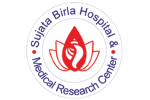Make an Appointment
Spinal muscular atrophy (SMA) is a
neuromuscular disease
that is inherited and causes muscles to weaken and waste away. SMA patients have a type of nerve cell in the spinal cord called a motor neuron that controls muscle movement. Unless these motor neurons are present, muscles do not receive nerve signals that cause them to move. Atrophy is a medical term that means a size reduction. Due to a lack of use, certain muscles in SMA shrink and weaken.
What are the types of spinal muscular atrophy?
SMA is classified into four types:
- Type 1 (severe): Approximately 60% of people with SMA have type 1, also known as Werdnig-Hoffman disease. Symptoms appear shortly after birth or within the first six months of an infant’s life. Type 1 SMA infants have difficulty swallowing and sucking. They do not reach typical developmental milestones such as holding their heads up or sitting. Children become more vulnerable to respiratory infections and lung collapse as their muscles deteriorate (pneumothorax). The majority of type 1 SMA children die before reaching the age of two.
- Type 2 (intermediate): Type 2 SMA (also known as Dubowitz disease) symptoms appear between the ages of six and 18 months. This type usually affects the lower limbs. Children with type 2 SMA can sit up but cannot walk. The majority of children with type 2 SMA survive into adulthood.
- Type 3 (mild): Type 3 SMA (also known as Kugelbert-Welander or juvenile-onset SMA) symptoms appear after a child is 18 months old. Some people with type 3 diabetes do not show signs until they are in their early twenties. Mild muscle weakness, difficulty walking, and frequent respiratory infections are all symptoms of type 3. Over time, symptoms can impair one’s ability to walk or stand. Type 3 SMA has no significant impact on life expectancy.
- Type 4 (adult): The rare adult form of SMA does not typically manifest until the mid-30s. Because muscle weakness symptoms develop slowly, most people with type 4 remain mobile and lead long lives.
What causes spinal muscular atrophy?
SMA patients are either missing a portion of the SMN1 gene or have a faulty (mutated) gene. A healthy SMN1 gene produces SMN protein. Motor neurons require this protein to survive and function properly. Because people with SMA do not produce enough SMN protein, their motor neurons shrink and die. As a result, the brain is unable to control voluntary movements, particularly those involving the head, neck, arms, and legs.
People also have SMN2 genes, which produce a trace of SMN protein. Up to eight different people have the SMN2 gene. Because the extra genes compensate for the missing SMN1 protein, having multiple copies of the SMN2 gene usually results in less severe SMA symptoms. Non-SMN gene mutations (non-chromosome 5) rarely cause SMA.
What are the symptoms of spinal muscular atrophy?
The symptoms of SMA differ depending on the type. People with SMA typically experience a progressive loss of muscle control, movement, and strength. Muscle loss worsens with age. The muscles closest to the torso and neck are particularly vulnerable to the disease. Some SMA patients are unable to walk, sit, or stand. Others gradually lose the ability to perform these tasks.


2 Comments
Pingback: Spinal Muscular Atrophy (SMA) – Sujata Birla Hospital
Pingback: World Osteoporosis Day 2022 | Sujata Birla Hospital